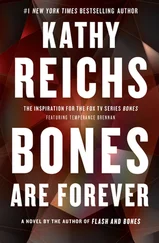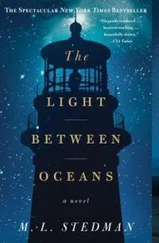I wanted to sit, hold my head in my hands, and let the tears flow.
Instead I drew a few steadying breaths, rose, and crossed what seemed a thousand miles of darkness. Climbed the stairs on rubbery legs.
A single passage cut right at the top. I followed it to the only closed door.
Gun tight in one clammy hand, I reached out and turned the knob with the other.
The door swung in.
I stared into pure horror.
PART ONE


I’VE BEEN HELD PRISONER BEFORE. In a basement, a morgue cooler, an underground crypt. It’s always frightening and intense. But this captivity exceeded all others for pure physical pain.
The jurors’ lounge in the Mecklenburg County Courthouse is as good as such facilities get—Wi-Fi, workstations, pool tables, movies, popcorn. I could have applied for a waiver. Didn’t. The judicial system called, I came. Good citizen Brennan. Besides, given my line of work, I knew I’d be excused from actually serving. When I’d planned today’s schedule I’d slotted sixty, ninety minutes max, cooling my heels.
Heels. Follow my leap here. In my business exciting footwear is Gore-Tex hikers that breathe, maybe wellies that don’t land you on your ass. Buying, much less wearing, murderous high heels is about as likely for me as finding Giganotosaurus remains behind Bad Daddy’s Burgers.
My sister Harry had talked me into the three-inch Christian Louboutin pumps. Harry, from Texas, land of big hair and mile-high stilettos. You’ll look professional, she’d said. In charge. Plus they’re marked down 60 percent.
I had to admit, the burnished leather and snazzy stitchwork did look great on my feet. Feel great? Not after three hours of waiting. When the bailiff finally called our group, I near-tottered into the courtroom, then into the jury box when my number was called.
“Please state your full name.” Chelsea Jett, six minutes out of law school, four-hundred-dollar suit, pricey pearl choker, heels that left mine in the dust. A new prosecutor, Jett was cloaking a case of nerves with brusqueness.
“Temperance Daessee Brennan.” Make it easy on both of us. Excuse me pronto.
“Please state your address.”
I did. “That’s at Sharon Hall,” I added, just to be affable. Nineteenth-century manor, red brick, white pillars, magnolias. My unit is the annex to the carriage house. Can’t get more Old South than that. I offered none of that.
“How long have you resided in Charlotte?”
“Since I was eight.”
“Does anyone live at that address with you?”
“My adult daughter has at times, but not now.” The bracelet Katy gave me hung loose on my wrist, a delicate silver band engraved MOM ROCKS.
“Your marital status?”
“Separated.” Complicated. I definitely didn’t add that.
“Are you employed?”
“Yes.”
“Please state your employer.”
“State of North Carolina.” Keep it simple.
“Your occupation?”
“Forensic anthropologist.”
“What is the educational requirement for that profession?” Stiff.
“I hold a PhD and am certified by the American Board of Forensic Anthropology.”
“So you perform autopsies.”
“You’re thinking of a forensic pathologist. Common mistake.”
Jett stiffened.
I offered a smile. The counselor didn’t.
“Forensic anthropologists work with the dead for whom normal autopsies are impossible—the skeletal, mummified, decomposed, dismembered, burned, or mutilated. We’re consulted on many issues, all of which are answered through analysis of the bones. For example, are the remains in question human or animal?”
“That requires an expert?” Restrained skepticism.
“Some human and animal bones are deceptively similar.” I pictured the mummified sets awaiting me at the MCME. “Fragmentary remains can be especially difficult to assess. Are they from one individual, several, humans, animals, both?” The bundles I was not examining because I was sitting here, feet bloating like corpses in water.
Jett flicked a manicured hand, impatient for me to continue.
“If the remains are human, I look for indicators of age, sex, race, height, illness, deformity, or anomaly—anything that might be of use in establishing ID. I analyze trauma to determine manner of death. I estimate how long the victim has been dead. I consider postmortem body treatment.”
Jett raised one questioning brow.
“Decapitation, dismemberment, burial, submersion—”
“I think that covers it.”
Jett’s gaze dropped to her scribbled questions. A long, long list.
My eyes found my watch, then wandered to the unfortunates still waiting to be grilled. I’d dressed to look respectful, to project the image expected of a representative of the Mecklenburg County Medical Examiner’s Office. Tan linen pantsuit, silk turtleneck. Such was not the case for all my fellow captives. My personal favorite was the young woman in a tight sleeveless turtleneck, jeans, and sandals.
Not haute couture, but I suspected her feet felt better than mine. I tried to wiggle my toes inside the torturous pumps. Failed.
Ms. Jett took a deep breath. Where was she headed? I didn’t wait to find out.
“As forensic anthropologist for the state, I’m under contract to both UNC Charlotte—I teach an upper-level seminar there—and to the Office of the Chief Medical Examiner in Chapel Hill and the Mecklenburg County Medical Examiner here in Charlotte. I also provide expertise to the Laboratoire de sciences judiciaries et de médecine légale in Montreal.” Read: I am busy. I consult to police agencies, the FBI, the military, coroners, and medical examiners. You know the defense attorney will excuse me if you don’t.
“Do I understand correctly? You work regularly in two countries?”
“It’s not as odd as it sounds. In most jurisdictions, forensic anthropologists function as specialty consultants. As I’ve stated, my colleagues and I are only called in on cases where there’s insufficient flesh for an autopsy, or the remains—”
“Right.”
Jett finger-scanned the endless lineup on her yellow pad.
I stretched— tried to stretch—my unhappy phalanges.
“In the course of your work with the medical examiner’s office, do you come into contact with police officers?”
Finally. Thank you.
“Yes. Often.”
“Prosecuting or defense attorneys?”
“Both. And my ex-husband is a lawyer.” Sort of ex.
“Do you personally know anyone involved in this litigation, the defendant, his family, the police investigators, the attorneys, the judge—”
“Yes.”
And I was excused.
Ignoring my protesting pedal digits, I hobble-bolted from the courtroom, across the lobby, and out the double glass doors. My Mazda was at the farthest corner of the parking deck. Arriving ten minutes past the eight A.M. hour demanded on the summons, I’d grabbed the first space I could find, halfway to Kansas.
After a fast limp across a traffic lane, I rounded a row of vehicles and found my car closely flanked by a humongous SUV on the driver’s side and even more closely wedged on the passenger side. Sweat glands pumping, I wriggled between the two sets of handles and rearview mirrors, butt and chest skimming the grimy doors and side panels squeezing my torso. My classy tan linen now looked like I’d taken a roll in a landfill.
As I wedged the door open and squeezed behind the wheel, something clinked at my feet. A sensible citizen—that is, a citizen in sensible footwear—would have stopped to identify whatever automotive adornment had been dislodged. I focused on my escape, fingers searching for keys in the zipper pouch of my purse.
Читать дальше












